ROUND 11 is Sir Doug Nicholls Round and the league is celebrating the contribution of and the culture of Australia’s First Peoples.
This week against Hawthorn in Launceston, Port Adelaide will be wearing a special guernsey featuring an Aboriginal design by Paddy Ryder and his uncle Kevin Bynder.
We thought it would also be a good chance to look back over our Indigenous guernseys from recent years.
2013: Fast and Furious Emus - Jingili
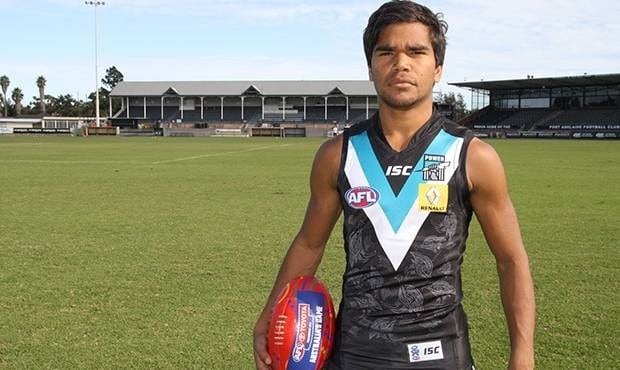 |
This
The emu is the totem of the Jingili language group - the region of the Northern Territory where Port Adelaide player Jake Neade was raised.
The emu emblem used on the
The
2014: Valerie Ah Chee's guernsey - Bindjareb
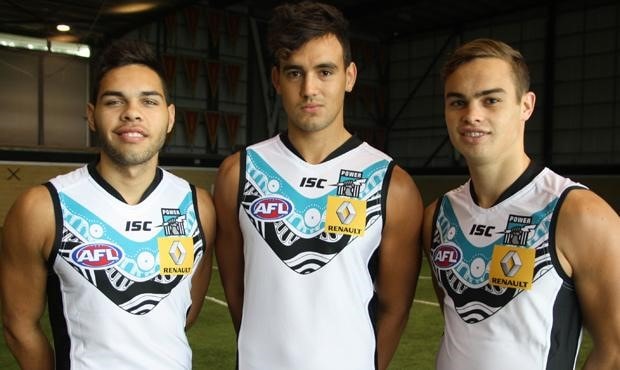 |
Brendon Ah Chee's mother
“Mum wanted to represent support networks, family and relationships,” Brendon Ah Chee said in 2014.
“The design basically represents
2015: Tree of Life - Kaurna
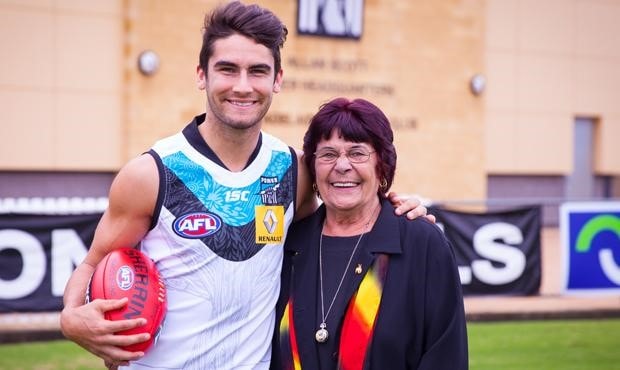 |
Aunty Barbara Wingard designed the Power's 2015 AFL Indigenous Round guernsey.
She explained at the guernsey's launch that the jumper represents the entirety of the Port Adelaide Football Club.
“The seven roots represent our seven Aboriginal Port Adelaide players – who they are, where they are from, their people’s past present and future."
“The ground represents where we all live: our beautiful earth, river and seas.
“The trunk represents our power, skills and knowledge of life.
“The branches represent our hopes, dreams and goals.
“The four seasons are represented in the top part of the image – we reach out to all people no matter what season of life they are going
“And as the trees all come together, we make one forest – players, families, coaches, supporters, and community.”
2016: Bambara - Jandai
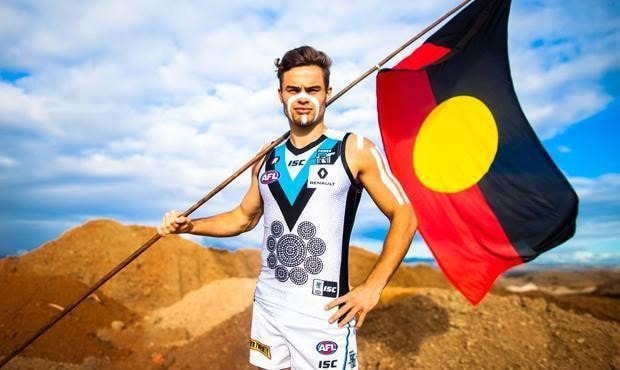 |
Karl Amon designed Port Adelaide's 2016 Sir Douglas Nicholls Indigenous Round guernsey.
“Bambara means ‘journey’ in my language group, which is the Jandai language group from the Noonuccal people on North Stradbroke Island,” Amon says.
“The journey it talks about is the one taken by each of our eight players towards the club, the way that they’ve become part of the club.”
2017: Nathan Krakouer’s referendum recognition -
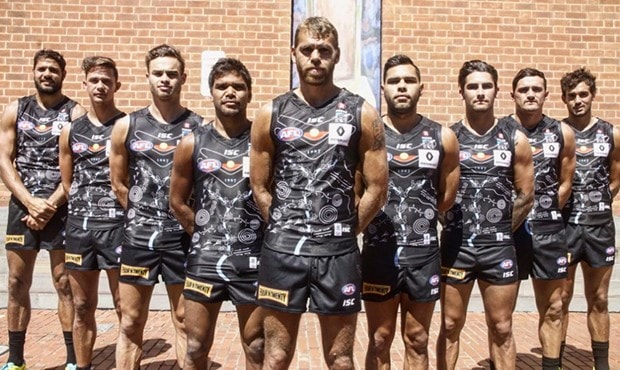 |
Nathan Krakouer designed Port Adelaide’s 2017 Sir Doug Nicholls Indigenous Round guernsey, as modelled by the club’s indigenous players.
“I placed the year 1967 on the front of the
“I placed boomerangs in the
“And the
“They would put a mixture of ochre, water and animal fat into their mouths and blow it across their hands onto a surface.
2018 – Ryder’s river representation - Whadjuk-Yuet-Badimia
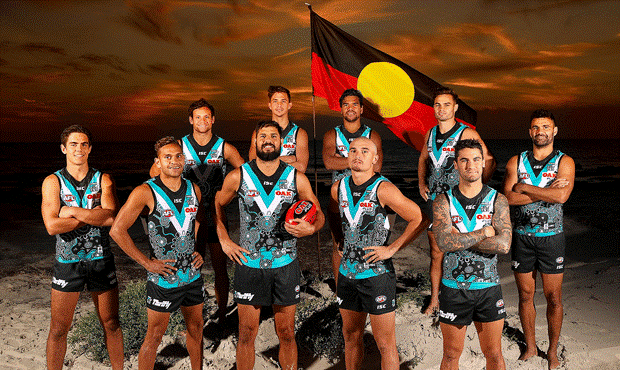 |
Designed by Paddy Ryder’s artist uncle Kevin
The design features a big camping place situated in the middle of the
“The story shows the ten indigenous players on the list and where they come from all around Australia and the centrepiece represents the Port Adelaide Football Club,” Ryder said.
“It shows the ten players and Kenny sitting around and having a chat at the Port footy club and some of the elders looking down and protecting the players and the club.
“You see some representation of the water that surrounds the Port Adelaide area, the Port River and the beach as well.”
Below that are kangaroo tracks, symbolising the kangaroo as a totem but also its role as a traditional food, which is hunted and shared with family.
The top section of the
Black and white dots between the circles represent the Magpies in the SANFL and there is a nod to the lightning bolt of the Power.

